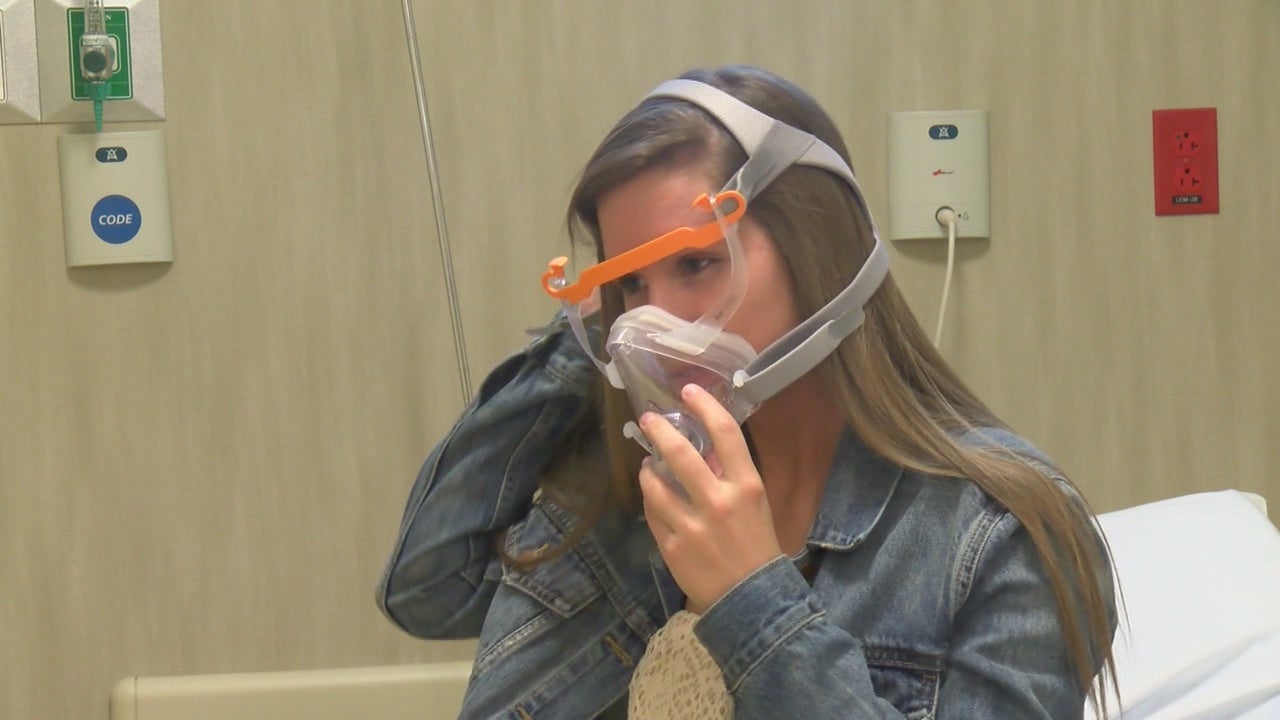New sleep apnea procedure offers hope to those suffering
INDIANAPOLIS (WISH) — It’s estimated that one out of every 25 Americans suffer from sleep apnea. It’s a sleep disorder that can not only leave people feeling exhausted, but it can also lead to high blood pressure and even heart failure. Now, a new procedure offers patients hope.
It’s called Inspire Upper Airway Stimulation Therapy. It was approved by the FDA a year ago. Patients are reporting a nearly 70% success rate. Only a couple dozen physicians in the world are trained to perform the procedure. One of those doctors is right here in Indiana at St Vincent.
Tracie Eldridge has had sleep apnea for almost 25 years. She’s also a truck driver.
“I was to the point where I was afraid to go out of town by myself because I’d fall asleep driving. I got to the point that I was falling asleep standing up,” said Eldridge.
Tracy never had an accident behind the wheel, but she found herself struggling every single day.
“It was constantly tossing and turning and never really getting any good sleep. You’d go to bed but you don’t really feel rested when you get up,” said Eldridge.
After seeing various doctors, Tracy finally came across Dr. Tod Huntley. He specializes in sleep apnea research and treatment. The disorder interrupts breathing during sleep. Dr. Huntley said Tracie’s case was extremely severe.
“Normal is up to five times an hour. In general, if somebody’s airway blocks off five to 15 times per hour, it’s considered mild sleep apnea. Fifteen to 30 is generally considered moderate. More than 30 is considered severe. Tracie blocked off about 80 times per hour,” said Dr. Huntley.
Typically, sleep apnea patients use CPAP machines, which include a breathing facial mask worn at night. Many patients like Tracie have problems sleeping with the mask on. Tracie was one of nine people who took part in a clinical trial. Once the FDA approved a similar procedure, Tracy was first in line.
Here’s how it works.
First, a nerve stimulator is implanted into the chest. There are two electrodes or wires attached. They are also implanted. The system senses the start of a breath. It’s battery operated with a remote control. The device is turned off during the day and on before bed time.
“(It) provides the stimulation to the muscles so that as soon as the breath starts, the muscles tense enough that the airway opens and we’re actually preventing blockages,” said Dr. Huntley.
Preventing blockages is what allows Tracie to get sleep.
“After I got the device put in, it was like a whole new world. The tiredness was done. My energy level was back,” said Aldridge.
The procedure is meant for those with mild to severe sleep apnea. Not everyone is a good candidate. Contact St. Vincent for a health assessment to determine if this procedure is right for you.
Traci’s insurance covered 100% of the procedure. However, since it’s a new option, not all insurance companies are on board. Out of pocket, the surgery costs around $20,000.
